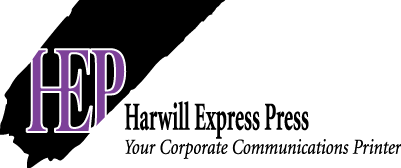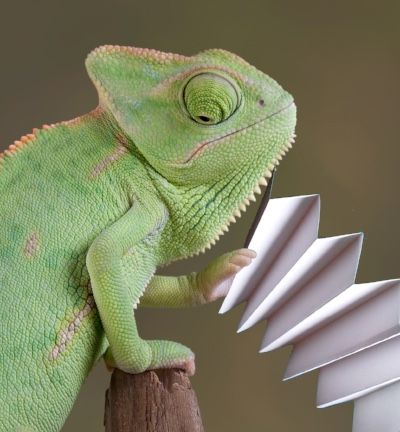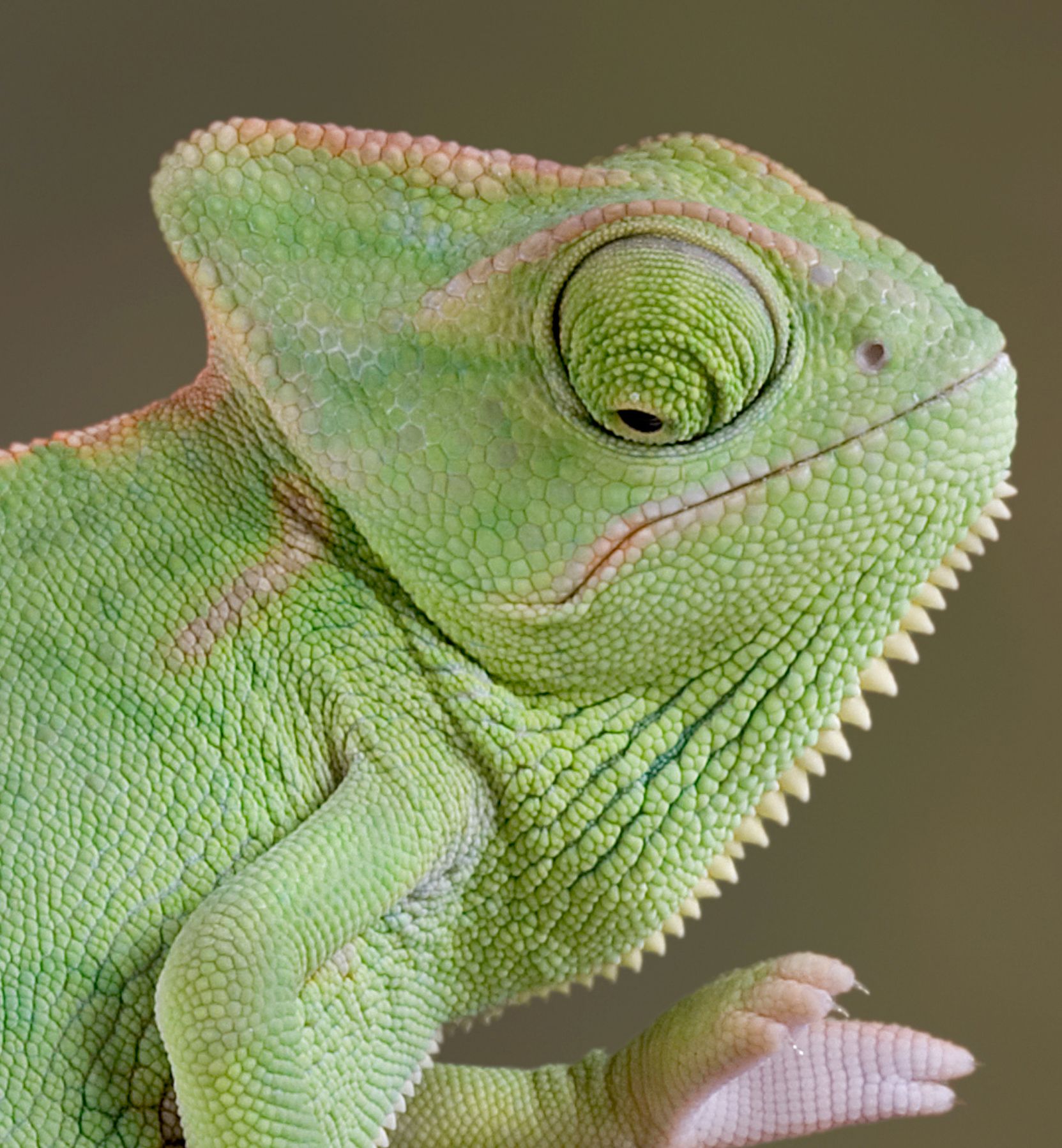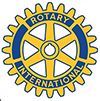Glossary of Terms
We take great pride in making our clients feel confident about their jobs during the production process. To help you gain a better understanding of what’s happening to your project, we’ve compiled a glossary of terms that we commonly use in our industry.
-
ACCORDION FOLDA type of paper folding in which each fold runs in the opposite direction to the previous fold creating a pleated or accordion effect.
-
ADDITIVE COLORSIn photographic reproduction, the primary colors of red, green and blue which are mixed to form all other colors.
-
ALIGNMENTThe condition of type and or art materials as they level up on a horizontal or vertical line.
-
ANTIQUE FINISHPaper with a rough, sized surface used for book and cover stock.
-
AQUEOUS PLATEWater soluble plate coatings, which are less toxic and less polluting.
-
ART-LINED ENVELOPE An envelope that is lined with an extra fine paper; can be colored or patterned.
-
ASCENDERAny part of a lower case letter which rises above the main body of the letter such as in "d", "b" and "h".
-
AUTHOR'S ALTERATIONS (AA's)Changes made after composition stage where customer is responsible for additional charges.
-
BACK TO BACK Print applied to both sides of a sheet of paper.
-
BANKER'S FLAP ENVELOPEAlso called wallet flap; the wallet flap has more rounded flap edges.
-
BASIS WEIGHTBasis or basic weight refers to the weight, in pounds, of a ream (500 sheets) of paper cut to a given standard size for that particular paper grade.
-
BLANKETOn offset presses a fabric-reinforced sheet of rubber to transfer the impression from the plate onto the paper.
-
BLEEDExtra ink area that crosses trim line, used to allow for variations that occur when the reproduction is trimmed or die-cut.
-
BLIND EMBOSSA design or bas relief impression that is made without using inks or metal foils.
-
BLOW-UPAny enlargement of photos, copies or line art.
-
BODYThe main shank or portion of the letter character other than the ascenders and descenders. Also: A term used to define the thickness or viscosity of printer's ink.
-
BODY SIZEThe point size of a particular type character.
-
BROCHURE A pamphlet that is bound in booklet form.
-
CALIPERThe measurement of thickness of paper expressed in thousandths of an inch or mils.
-
CAPS & LOWER CASEInstructions in the typesetting process that indicate the use of a capital letter to start a sentence and the rest of the letters in lower case.
-
CAPS & SMALL CAPSTwo sizes of capital letters made in one size of type.
-
CAST COATEDA paper that is coated and then pressure dried using a polished roller which imparts an enamel like hard gloss finish.
-
COATED (PAPER)Paper coated with clay, white pigments and a binder.
-
COATED STOCKAny paper that has a mineral coating applied after the paper is made, giving the paper a smoother finish.
-
COLLATETo gather sheets or signatures together in their correct order. (see Gather)
-
COLUMN GUTTERSpace between two or more columns of type on one page.
-
COMPOSITIONThe assembly of characters into words, lines and paragraphs of text or body matter for reproduction by printing.
-
CONDENSED TYPEA narrow, elongated type face.
-
CONTINUOUS TONEImage made of non-discernable picture elements which give appearance of continuous spectrum of grey values or tones.
-
CONTRASTThe degree of tonal separation or gradation in the range from black to white.
-
CRACKINGDelamination.
-
CREEPResult of added thickness of folded sheets being behind one another in a folded signature. Outer edges of sheets creep away from back most fold as more folded sheets are inserted inside the middle.
-
CROSSMARKSMarks of fine lines, which intersect to indicate accurate alignment of art elements.
-
CROSSOVERA term used to describe the effect of ink from an image, rule or line art on one printed page, which carries over to another page of a bound work.
-
CUTTERMachine for accurately cutting stacks of paper to desired dimensions...can also be used to crease. Also trims out final bound books' top size (soft cover).
-
CUTTING DIESharp edged device, usually made of steel, to cut paper, cardboard, etc., on a printing press.
-
DENSITOMETERAn optical device used by printers and photographers to measure and control the density of color.
-
DENSITYThe lay of paper fibers relative to tightness or looseness which affects the bulk, the absorbency and the finish of the paper.
-
DESCENDERA term that describes that portion of lower case letters which extends below the main body of the letter, as in "p".
-
DIEDesign, letters or shapes, cut into metal (mostly brass) for stamping book covers or embossing. An engraved stamp used for impressing an image or design.
-
DIE CUTTINGA method of using sharp steel ruled stamps or rollers to cut various shapes i.e. labels, boxes, image shapes, either post press or in line. The process of cutting paper in a shape or design by the use of a wooden die or block in which are positioned steel rules in the shape of the desired pattern.
-
DIE STAMPINGAn intaglio process for printing from images engraved into copper or steel plates.
-
DOG EAROccurs when you fold into a fold (such as a letter fold). At the side of one of the creases you get an indentation. It may look like a small inverted triangle.
-
DOTThe smallest individual element of a halftone.
-
DOT GAINDarkening of halftone image due to ink absorption in paper causing halftone dots to enlarge. Terms to describe the occurrence whereby dots are printing larger than they should.
-
DRILLThe actual drilling of holes into paper for ring or comb binding.
-
DROP SHADOWA shadow image placed strategically behind an image to create the affect of the image lifting off the page.
-
DRY MOUNTPasting with heat sensitive adhesives.
-
DULL FINISHAny matte finished paper.
-
DUMMYA term used to describe the preliminary assemblage of copy and art elements to be reproduced in the desired finished product; also called a comp.
-
DUOTONEColor reproduction from monochrome original. Keyplate usually printed in dark color for detail, second plate printed in light flat tints. A two-color halftone reproduction generated from a one-color photo.
-
DUPLEX PAPERPaper which has a different color or finish on each side.
-
EGGSHELL FINISHThe finish of paper surface that resembles an eggshell achieved by omitting the calendar process. Reference, calendar rolls.
-
EMA unit of measurement equaling 12 points or 4.5mm.
-
EMBOSSEDA method of paper finishing whereby a pattern is pressed into the paper when it is dry.
-
EMBOSSINGTo raise in relief a design or letters already printed on card stock or heavy paper by an uninked block or die. In rubber and plastic plate making the process is usually done by heat.
-
ENAMELA term that describes a glossy coating on paper.
-
ESTIMATEThe form used by the printer to calculate the project for the print buyer. This form contains the basic parameters of the project including size, quantity, colors, bleeds, photos etc.
-
EXPANDED TYPEType with width greater than normal producing a rectangular effect.
-
FELTA cloth conveyor belt that receives papers from the Fourdrinier wire and delivers it to the drier.
-
FELT FINISHThe smoother side of paper, usually a soft weave pattern used for book papers.
-
FILLING INA fault in printing where the ink fills in the fine line or halftone dot areas.
-
FITThe registration of items within a given page.
-
FOLD MARKSMarkings at top edges that show where folds should occur.
-
FOLDERMachine used to fold paper.
-
FOLIO OR PAGE NUMBERNumber of page at top or bottom either centered, flushed left or flushed right often with running headline.
-
FONTThe characters which make up a complete typeface and size.
-
FREE SHEETAny paper that is free from wood pulp impurities.
-
GHOSTINGImage which appears as a lighter area on a subsequent print due to local blanket depressions from previous image areas on a letterpress rotary machine as well as on an offset press.
-
GRADUATED SCREENAn area of image where halftone dots range continuously from one density to another.
-
GRAINDirection of fibers in a sheet of paper governing paper properties such as increased size changes with relative humidity, across the grain, and better folding properties along the grain.
-
GRAINED PAPERA paper embossed to resemble various textures, such as leather, alligator, wood, etc.
-
GRIPPER EDGEThe grippers of the printing press move the paper through the press by holding onto the leading edge of the sheet; this edge is the gripper edge.
-
GUTTERSpace between pages in the printing frame of a book, or inside margin towards the back or binding edge. The blank space or margin between the type page and the binding of a book.
-
HAIRLINE REGISTERPrinting registration that lies within the range of plus or minus one half row of dots. It is the thinnest of the standard printers' rules.
-
HALFTONETone graduated image composed of varying sized dots or lines, with equidistant centers.
-
HALFTONE SCREENA sheet of film or glass containing ruled right-angled lines, used to translate the full tone of a photo to the halftone dot image required for printing.
-
HICKIESImperfections in presswork due to dirt on press, trapping errors, etc.
-
HIGHLIGHTSThe lightest tones of a photo, printed halftone or illustration. In the finished halftone, these highlights are represented by the finest dots.
-
IBCInside back cover.
-
IFCInside front cover.
-
IMPOSITIONArrangement of pages so that they print correctly on a press sheet, and the pages are in proper order when the sheets are folded.
-
INDICIAMarkings pre-printed on mailing envelopes to replace the stamp.
-
KERNINGThe narrowing of space between two letters so that they become closer and take up less space on the page.
-
KRAFTA coarse unbleached paper used for printing and industrial products.
-
LEADERSThe dots or dashes used in type to guide the eye from one set of type to the next.
-
LEADINGSpace between lines of type; the distance in points between one baseline and the next.
-
LEDGER PAPERA stiff heavy business paper generally used for keeping records.
-
LETTERSPACINGThe addition of space between typeset letters.
-
LINE COPYAny copy that can be reproduced without the use of halftone screens.
-
LINENA paper that emulates the look and texture of linen cloth.
-
LOGOTYPEA personalized type or design symbol for a company or product.
-
M WEIGHTThe actual weight of 1000 sheets of any given size of paper.
-
MARGINImprinted space around edge of page.
-
MATTE FINISHA coated paper finish that goes through minimal calendaring. Reference, calendaring.
-
MIDTONE DOTCommonly taken as the area between highlight and shadow area of a subject's face in halftone image.
-
MOIREAn undesirable halftone pattern produced by the incorrect angles of overprinting halftone screens.
-
NEWSPRINTA light, low cost groundwood paper made especially for newspapers. Reference, groundwood.
-
OBCOutside back cover.
-
OFFSETThe most commonly used printing method, whereby the printed material does not receive the ink directly from the printing plate but from an intermediary cylinder called a blanket which receives the ink from the plate and transfers it to the paper.
-
OFFSET PAPERA term for uncoated book paper.
-
OPACITYQuality of papers that defines its opaqueness or ability to prevent two-sided printing from showing through.
-
OPAQUEA quality of paper that allows relatively little light to pass through.
-
OPAQUE INKInk that completely covers any ink under itself.
-
PAGE MAKEUPThe assemblage of all the necessary elements required to complete a page.
-
PERF MARKSMarkings usually dotted lines at edges showing where perforations should occur.
-
PERFECTA term used to describe the binding process where the signatures of a book are held together by a flexible adhesive.
-
PERFECT BINDINGBinding process where backs of sections are cut off, roughened and glued together, and rung in a cover.
-
PERECTINGPrinting both sides of the paper (or other material) on the same pass through the printing machine.
-
PERFORATINGPunching small holes or slits in a sheet of paper or cardboard to facilitate tearing along a desired line.
-
PHOTOENGRAVINGMaking printing plates by exposure of line and halftone negatives on sensitized metal, converting the image into an acid resist, and etching the print to the relief required for letterpress printing.
-
PHOTOSTATA photographic print creating an image using photography and electrostatic processes; also called a stat.
-
PICAStandard of measurement, 1/6 inch. 1 pica = 12 points 72 points = 1 inch
-
PICKING (2)An occurrence in printing whereby the tack of ink pulls fibers or coating off the paper surface, leaving spots on the printed surface.
-
PIN REGISTERUsing metal pins fitted into preset holes of copy sheets, films, plates and presses that will assure the proper registration.
-
PLASTIC COMBA method of binding books whereby holes are drilled on the side closest the spine, and a plastic grasping device is inserted to hold the pages together.
-
PLATEReproduction of type or cuts in metal, plastic, rubber, or other material, to form a plate bearing a relief, planographic or intaglio printing surface.
-
PRIMARY COLORSIn printing the four primary colors are cyan (blue), magenta (red), yellow and black.
-
PRINTERS SPREADTwo consecutive pages as they appear on a flat or signature.
-
PROCESS INKSPrinting inks, usually in sets of four colors. The most frequent combination is yellow, magenta, cyan, and black, which are printed, one over another in that order, to obtain a colored print with the desired hues, whites, blacks, and grays.
-
PROCESS PRINTINGPrinting from two or more half tones to produce intermediate colors and shades.
-
RAG PAPERPapers with a complete or partial content of cotton fibers.
-
RAGGED LEFTThe term given to right-justified type that is uneven on the left.
-
RAGGED RIGHTThe term given to left-justified type that is uneven on the right.
-
READERS SPREADTwo consecutive pages as they appear in printed piece.
-
REAM500 sheets of paper.
-
REGISTERThe arrangement of two or more images in exact alignment with each other.
-
REGISTER MARKSAny crossmarks or other symbols used on layout to assure proper registration.
-
RIGHT ANGLE FOLDA term that denotes folds that are 90 degrees to each other.
-
RUN-AROUNDA term given to copy that accommodates the lines of a picture or other image or copy.
-
RUNNING HEADA title at the top of a page that appears on all pages of a book or chapter of a book.
-
SADDLE STITCHINGStitching where the wire staples pass through the spine from the outside and are clinched in the center. Only used with folded sections, either single sections or two or more sections inset to form a single section.
-
SATIN FINISHA smooth delicately embossed finished paper with sheen.
-
SCALINGThe enlargement or reduction of an image or copy to fit a specific area.
-
SCOREImpressions or cuts in flat material to facilitate bending or tearing.
-
SCREEN ANGLESThe placement of halftone screens to avoid unwanted moire patterns. Frequently used angles are black 45deg, magenta 75deg, yellow 90deg, and cyan 105deg.
-
SCREEN RULINGA measurement equaling the number of lines or dots per inch on a halftone screen.
-
SELF COVERA cover made out of the same paper stock as the internal sheets.
-
SHADOW DOTThe lowest density of a halftone image.
-
SHEETWISEThe printing of two different images on two different sides of a sheet of paper by turning the page over after the first side is printed and using the same gripper and side guides.
-
SHOW THROUGHA problem that occurs when the printing on one side of a sheet is seen from the other side.
-
SIDE GUIDEThe guides on the sides of the sheet fed press that position the sheet sideways as the paper is led towards the front guides.
-
SIDE STITCHINGStitching where the wire staples pass through the pile of sections or leaves gathered upon each other and are clinched on the underside.
-
SIGNAURE (SECTION)Printed sheet (or its flat) that consists of a number of pages of a book, placed so that they will fold and bind together as a section of a book. The printed sheet after folding.
-
SMOOTHNESSThat quality of paper defined by its levelness which allows for pressure consistency in printing, assuring uniformity of print.
-
SPINEBack edge of a book.
-
SPIRAL BINDA binding whereby a wire or plastic is spiraled through holes punched along the binding side.
-
SPOT COLORSmall area printed in a second color.
-
STETA proofreader's symbol that is usually written in the copy margin, that indicates that the copy, which was marked for correction, should be left as it was.
-
STOCKA term for unprinted paper or other material to be printed.
-
SYNTHETIC PAPERSAny petroleum based waterproof papers with a high tensile strength.
-
TEXTA high quality printing paper.
-
THERMOGRAPHYA printing process whereby slow drying ink is applied to paper and while the ink is still wet, it is lightly dusted with a resinous powder. The paper then passes through a heat chamber where the powder melts and fuses with the ink to produce a raised surface.
-
TINTA halftone screen that contains all the same sized dots.
-
TRANSPARENTInks that do not block out the colored inks that they print over, but instead blend with them to create intermediate colors.
-
TRAPPINGThe process of printing wet ink over printed ink which may be wet or dry.
-
TRIM MARKSMarks placed on the sheet to indicate where to cut the page.
-
VARNISHA clear shiny or dull ink used to add gloss or dull to printed pieces. The primary component of the ink vehicle. Reference, vehicle.
-
VELLUMA finish of paper that is rough, bulky and has a degree of tooth.
-
VIGNETTEFade to white or small decorative design or illustration. A photo or illustration etc., in which the tones fade gradually away until they blend with the surface they are printed on.
-
W&TAn abbreviation for work and turn.
-
WATERMARKA translucent logo that is embossed during the papermaking process while the paper slurry is on the dandy roll. Reference, dandy roll
-
WEBThe roll of paper that is used in web or rotary printing.
-
WEB PRESSCylinder printing machine in which the paper is fed from a continuous reel, as opposed to sheet fed.
-
WIDOWA single word or two left at the end of a paragraph, or a part of a sentence ending a paragraph, which loops over to the next page and stands alone. Also, the last sentence of a paragraph which contains only one or two short words.
-
WIRE STITCHING OR STAPLINGTo fasten together sheets, signatures, or sections with wire staples. 3 methods... saddle stitching, side stitching, and stabbing.
-
WOVEA smooth paper made on finely textured wire that gives the paper a gentle patterned finish.
-
WRITING PAPERAnother name for bond paper.
-
XEROGRAPHIC PAPERPapers made to reproduce well in copy machines and laser printers.









